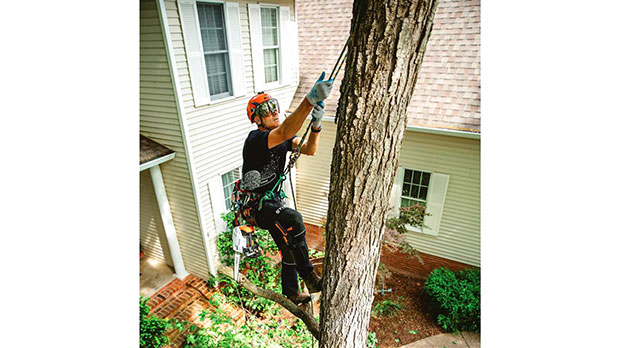September is the most common month for hurricanes to make landfall, according to NOAA, and with severe storms and tornadoes appearing around the country, it is more important than ever to take steps and be prepared before, during and after a storm.
TREE DAMAGE
A tree might seem like it would be able to sustain the forces of a large storm, but whether it is unseen internal damage, wet and unstable ground, or proximity to power lines, trees are vulnerable during severe storms and can present a significant hazard. The following tips from expert arborist and STIHL spokes-person Mark Chisholm can help you protect yourself, your family and your property from a storm.
BEFORE THE STORM
Develop a relationship with a certified tree care professional. By choosing the right company ahead of time, you’ll likely be prioritized as an existing customer when a storm does hit. However, if you are not able to do this perhaps using things like emergency tree services Fresno and other places would be a suitable idea in an unprepared situation.
CONDUCT A PRE-STORM ASSESSMENT AND IDENTIFY TROUBLE SPOTS
A pre-storm assessment can help you identify potential hazards on your property, such as cracks in tree trunks or major limbs, hollow or decayed trees, limbs extending over a roof, or trees in close proximity to power lines.
TAKE MEASURES TO PREVENT DAMAGE
After assessing possible hazards to your property, consider measures to limit potential damage. Remove dead, diseased or damaged limbs. Inspect leaning trees and consider removing those with large cavities. Prune branches that are too close to your house and over the street, and check your gutters to remove any debris to prevent water damage. For any work in and around your home, consider calling a professional, and always call a professional to assess and/or remove anything within close proximity to utility lines. Never attempt to do this yourself.
DURING THE STORM
Don’t try to be a hero.
Your property is not more important than your life. Prepare in advance and follow guidelines for evacuation and shelter.
AFTER THE STORM
More people are injured after a storm than during one. Storm-damaged trees present unique challenges and dangers. Put safety first. Evaluate what you can handle and what’s for a professional – anything not on the ground should definitely be handled by a professional. Some things could be a threat to your life, such as large broken or hanging limbs where chainsaw work is needed, or branches that are too close to a utility line. Never approach or attempt to move downed utility lines, and report branches close to or touching utility lines immediately.
If you’re skilled enough to do the work yourself, always wear proper attire and protective equipment, including boots, gloves, protective glasses, chainsaw protective pants, a helmet system and hearing protection. Never operate a chainsaw from a ladder, roof, in a tree or while standing on any other insecure surface – leave these jobs for the pros.
EVALUATE DAMAGE
A storm-damaged tree may not have to be removed. Inspect your trees to see if they’re healthy despite storm damage. If at least 50 percent of the tree’s crown is still intact, and the remaining branches can form a new branch structure, then there is a good chance the tree can be saved.
REPAIR MINOR DAMAGE
Remove broken branches, stubs or jagged remains of limbs. Smaller branches should be pruned at the point where they join larger ones. Don’t worry if the tree’s appearance is not perfect.
STAY EDUCATED
Learn more tips on tree safety, chainsaw safety, finding a tree care professional, and how to prepare for storms by visiting stihlusa.com.
This article is courtesy of Brandpoint.

